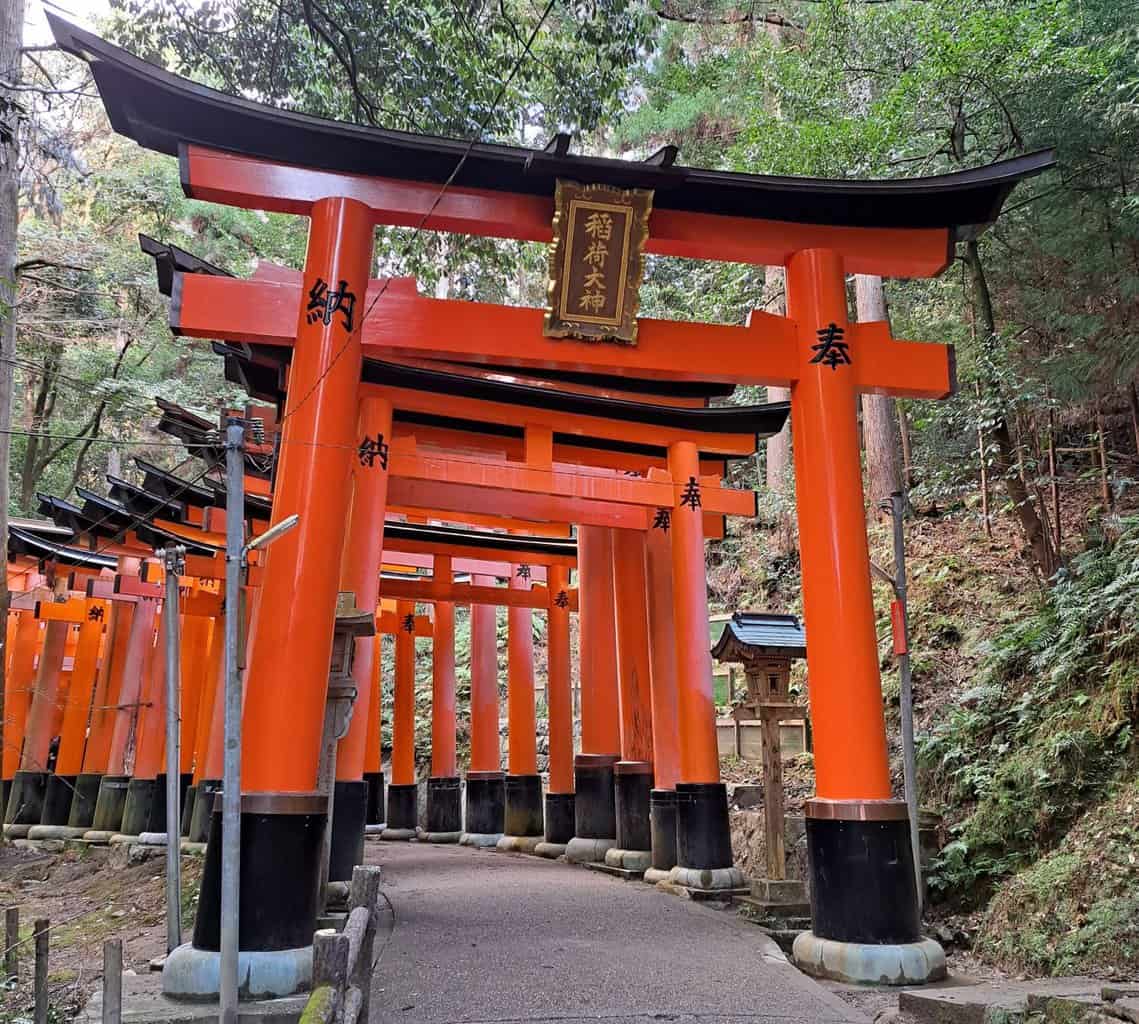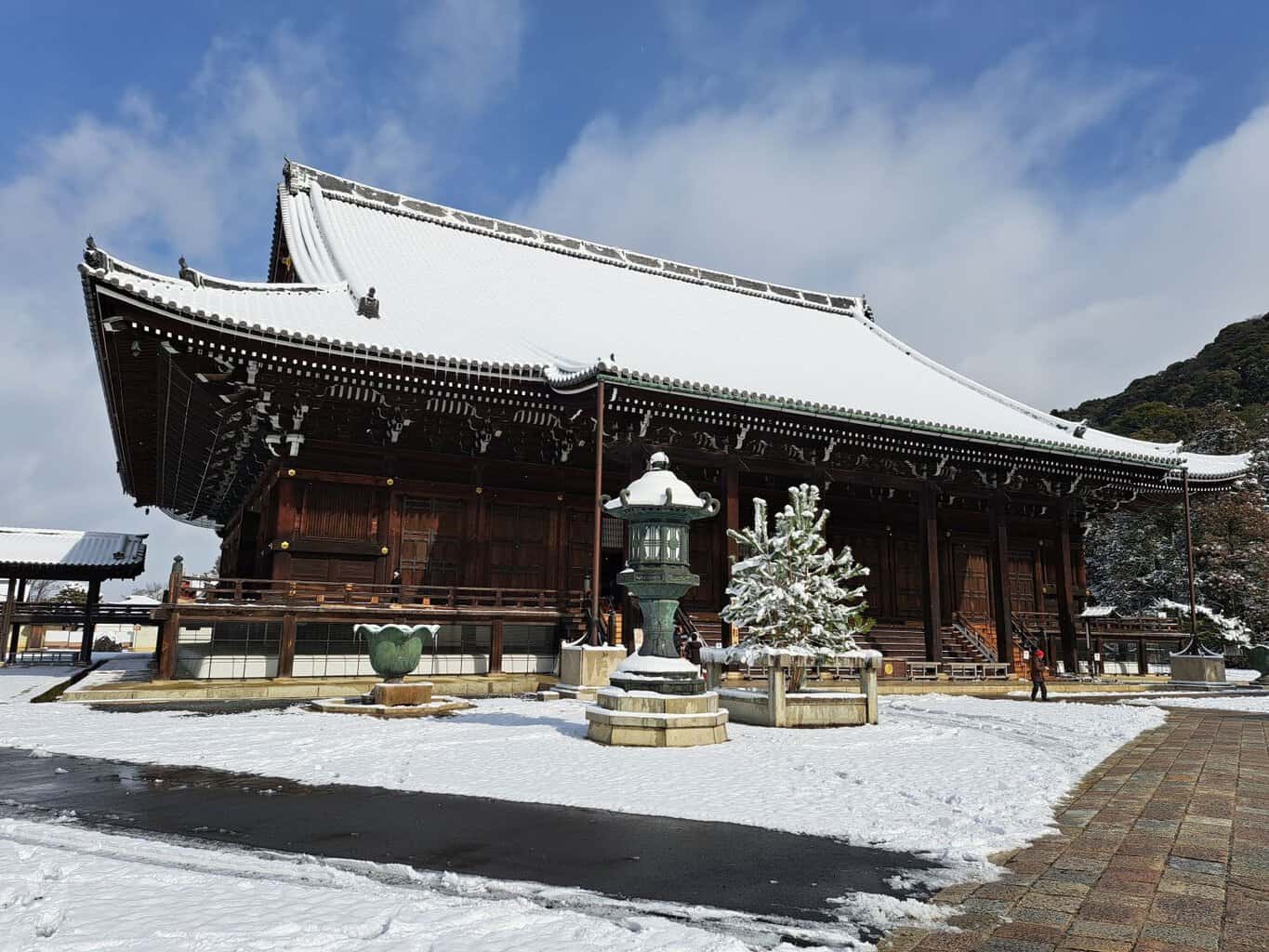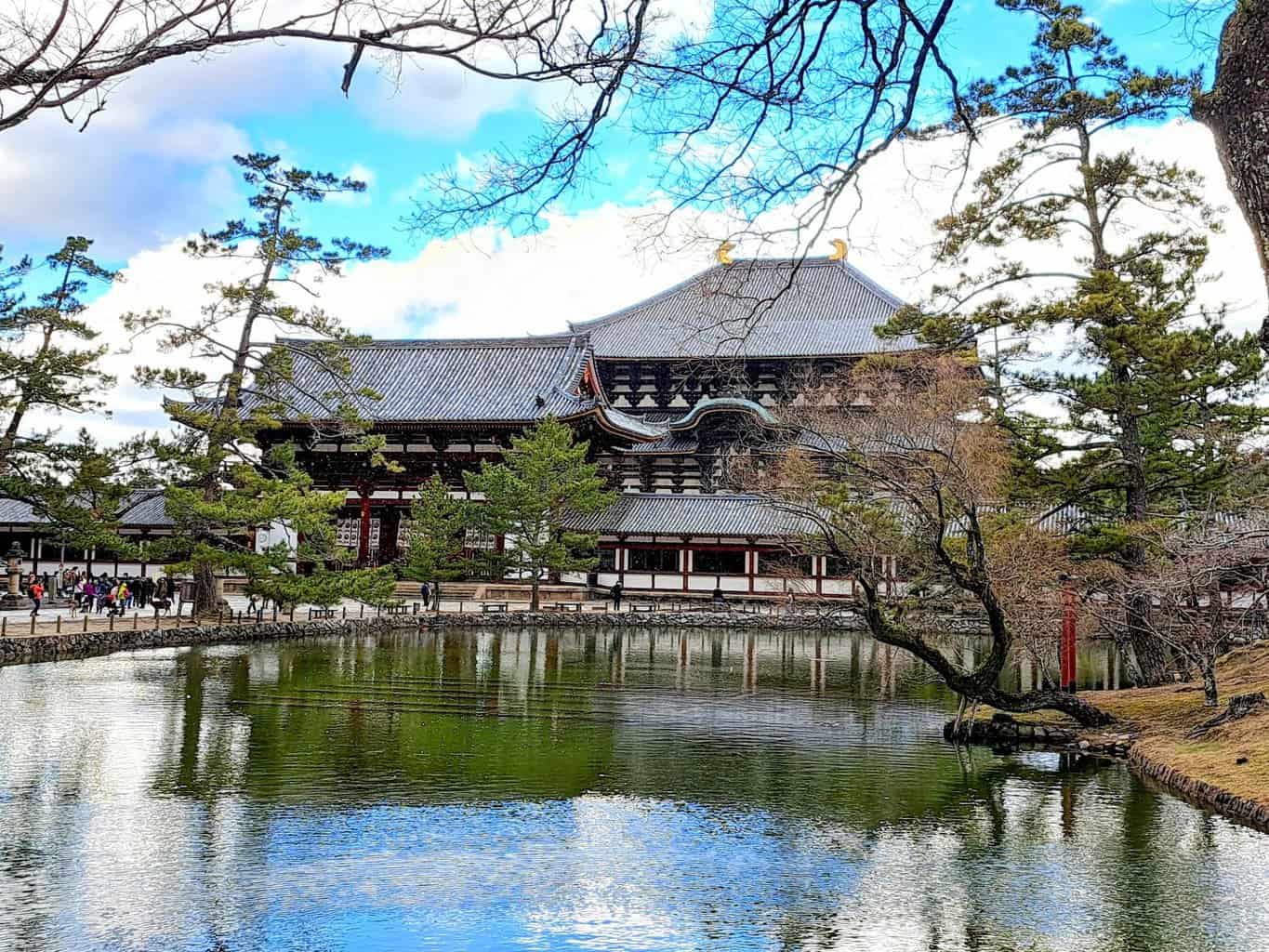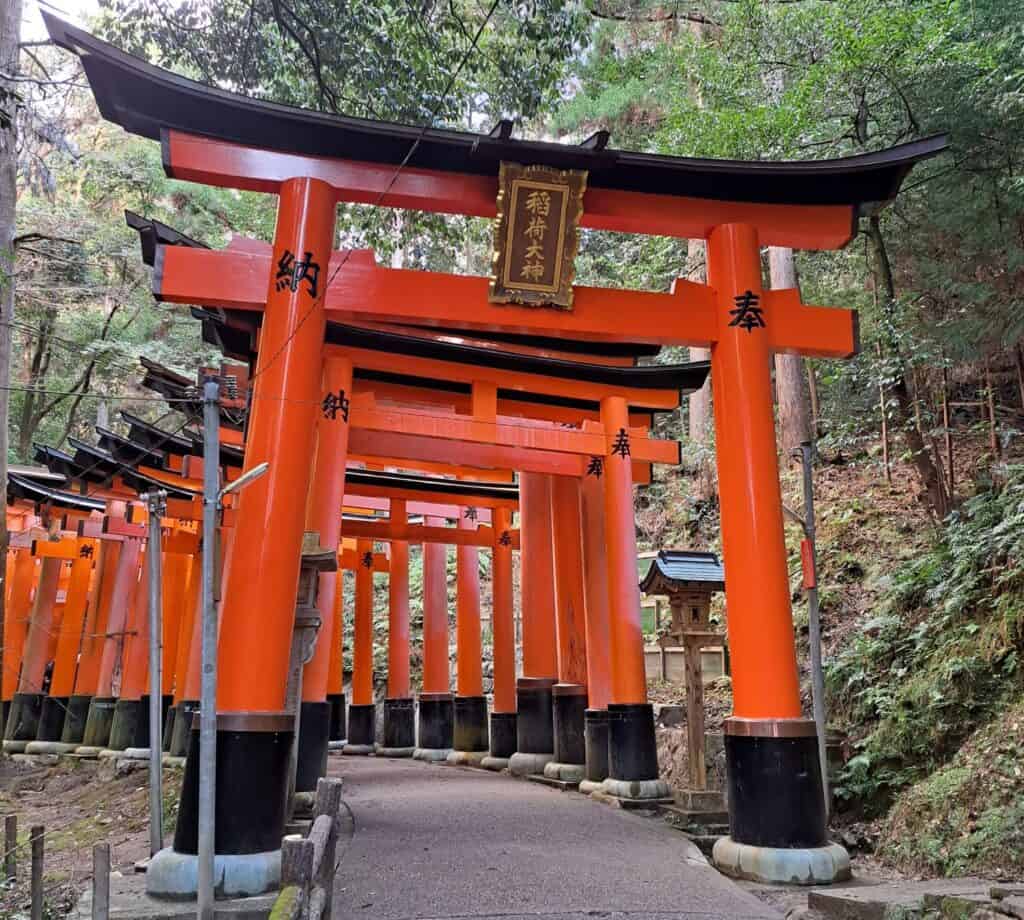
This post may contain affiliate links. I will receive a small commission if you use these links.
Visiting the Fushimi Inari Shrine
The Fushimi Inari shrine is one of the most popular places to visit in Kyoto. As with any popular place, it can get extremely crowded, so here’s some top tips to help you make the most of your visit to Kyoto’s Fushimi Inari Shrine.
Table of Contents
What makes the Fushimi Inari Shrine special?
Fushimi Inari is one of the most important Shinto shrines in Kyoto and is dedicated to Inari, the Shinto god of rice. There are many Inari shrines all over Japan, but Fushimi is considered the ‘head Inari shrine’.
The Fushimi Shrine in Kyoto is most well known and recognised for its red Torii gates. There are thousands of these red Torii gates, creating a gated walkway up Mount Inari and lining the route to the sacred Shinto grounds at the top. Back in the 15th century, there was a shrine which stood at the top of the mountain, however it was burnt down in a fire and several attempts to rebuild the shrine have not been successful due to several typhoons in the following years.
The famous and impressive red Torii gates have attracted many visitors over the years. The gates create an almost covered walkway that twists and turns through the forest, up towards the summit of Mount Inari.
How long is the walk through the Fushimi Inari Torii Gates?
The full length of the gated walkway from the start to the summit of Mount Inari is about 5km. If you are going all the way to the top of Mount Inari, it will take about 2-3 hours to complete the walk, there and back.
However, most people do just part or all of the first section. After 30-45 minutes walking through the first section of the gates, you will arrive at Yotsutsuji intersection. Here, you have two options. You can either turn back and go to the start, or, you can continue the hike up the mountain. If you are continuing up the mountain, you can take either path at the Yotsutsuji intersection as it is a circular loop. Most people will return back to the start at this point, so to make the most of the walk with less crowds, continue up the mountain.
If you don’t, or can’t walk to the Yotsutsuji intersection, don’t worry, you can just walk as far as you like and return. You are free to wander and explore at your own pace.
If you don’t want to walk at all, another popular activity at Fushimi Inari Shrine is to rent a kimono and book a photo shoot.
How difficult is the hike to Mount Inari?
If you are a regular hiker, or have completed a few hiking trails, then you will be fine. Although you will be constantly ascending up the mountain, it is more of a gradual incline, and is not excessively steep. You will also be on a hard path the whole way along, so it is not ‘off-road’, like you might imagine. This is not what I personally would call a ‘hike’. As long as you have comfy shoes (trainers are recommended), and you take your time, you will be fine.
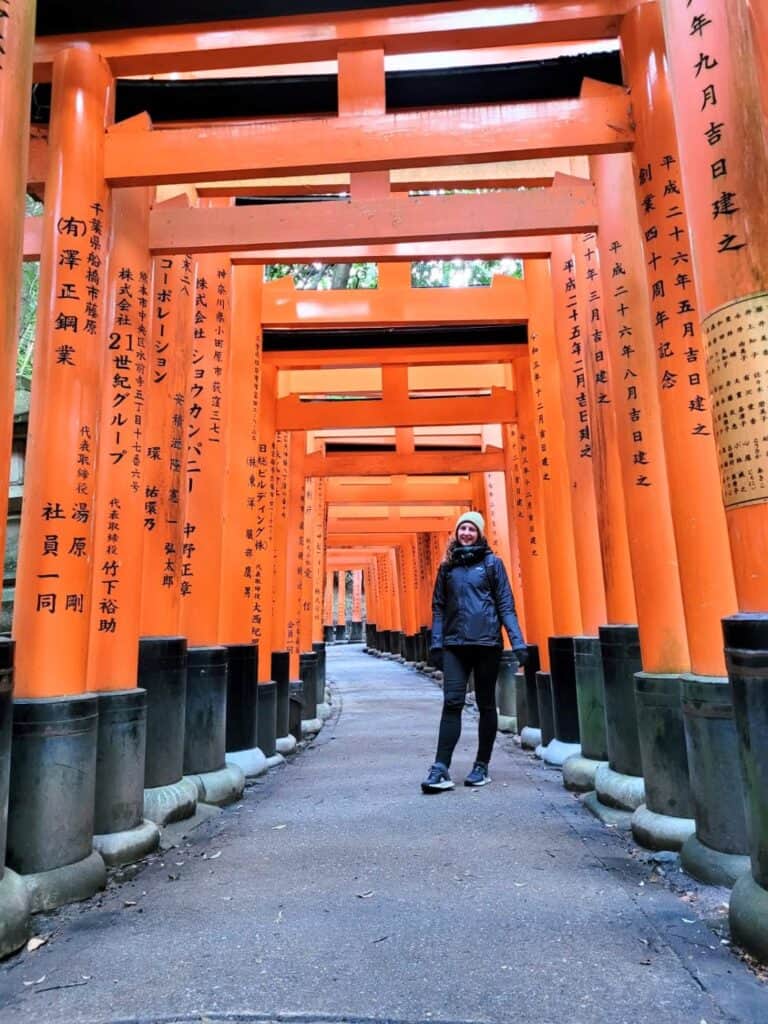
How to get to Fushimi Inari Shrine
From Kyoto station, ride the JR Nara Line train two stops to the JR Inari station. Bonus: If you have a JR pass, you can use it on this local line train, as long as your pass covers the area of Kyoto. Check out more about whether a JR pass is worth it, here.
If you don’t have a JR pass, you can also catch the Keihan Main Line train from Kyoto station to Fushimi Inari Station. The shrine is just a short walk from either station.
If you’re short on time, joining a one day tour is a great way to visit Fushimi Inari shrine, along with other popular tourist sights.
How much does it cost to visit?
It is free to visit the Fushimi Inari Shrine. There is no admission fee to visit the Shrine or walk through the famous red Torii gates. However, it is expected that you will make a small offering (donation) when visiting the main hall (honden) as a way to pay respect to the deity.
Are there any facilities at Fushimi Inari Shrine?
There are many street food stalls around the entrance of Fushimi Inari where you can get something to eat before or after your hike. You can also pick up a souvenir from one of the shops as a memento for your visit to the shrine.
Along the gated walkway up the mountain, there are a couple of vending machines for drinks and on your way back down, there are several tea rooms and a couple of restaurants also.
Toilets are located by the main entrance, at the beginning of the trail and there are also two more up the mountain.
How long do you need to spend at Fushimi Inari?
If you are going to do the full hike up to the summit of Mount Inari and back, then you will need around 2-3 hours. However, if you are not planning to hike the full route, then 1-2 hours is plenty of time to walk part of the Torii gated walkway, visit the main hall and take some photos.
If you are really short on time in Kyoto, there are many tours you can book which will take you to visit a couple of the main attractions in Kyoto in one day, including this Kyoto temple tour.
When is the best time to visit the Fushimi Inari Shrine?
In the morning
An obvious one, yes, but still true. As with many popular attractions, if you visit during peak times, you will be surrounded by crowds. The earlier you get there, the less crowds you will have joining you. Just like the Arashiyama Bamboo forest, you can get some great photos early in the morning as the rays of early sunlight stream in between the gates.
In the evening
The shrine is open 24/7, so if you’re not a morning person, plan to go later in the day instead, when everyone is leaving for the day. Just be careful if you plan to walk up the mountain as there are wild boars at night, so make sure you keep to the trail.
In the low season
I visited Japan in January, which is their low season. Travelling to Japan in their winter months have many advantages, including lower cost of accommodation and fewer tourists. Yes, it is colder and it can snow, but that creates some beautiful scenes in and around the shrine. Plus you have the chance to take part in other winter activities such as skiing or visiting the famous Japanese Snow Monkeys.
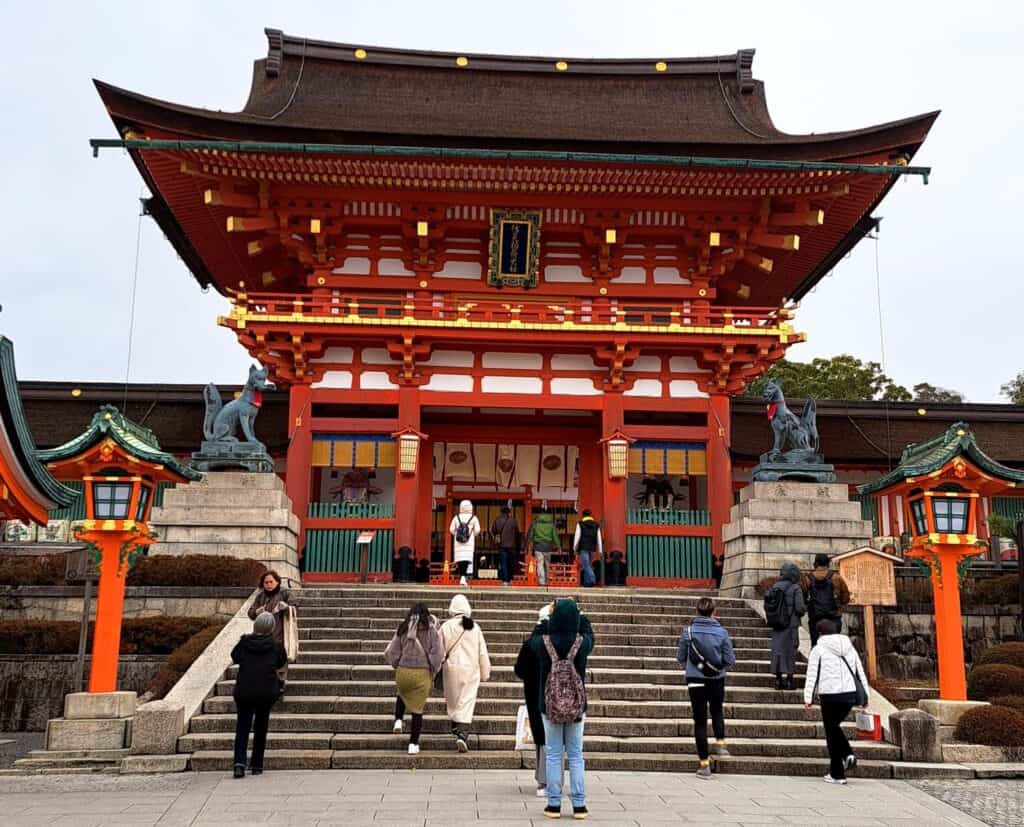
Things you should know when planning your visit to Fushimi Inari shrine
Stay to explore the whole shrine complex
Many people will visit the shrine and only stay to walk through the Torii gates or take a couple of photos. But it is definitely worth sticking around and exploring the rest of the site. As you arrive and walk under the main Romon Gate, you will see the impressive main hall of Fushimi Inari Shrine. The main hall is a similar style to the Senso-ji temple in Asakusa, Tokyo and is a beautiful shrine building. You can enter the main hall building, but as a sign of respect, it is expected that you will make a small donation to enter.
Aside from the main hall, you can wander around the gardens and see the many other gates and small buildings that are dotted around the complex.
Walk up the mountain to avoid the crowds!
As I’ve previously mentioned most of the people who visit the shrine will only complete the first section of the Torii gate walking trail, and some will only go a few hundred metres. Therefore, to enjoy the atmosphere and to take videos or photos with fewer people in the background, continue up the mountain. You don’t have to walk to the top of the mountain, but the further away you go, the fewer people there will be. One thing to note, however, is that the higher up the mountain you go, there will be fewer gates and they are less condensed, and more spread out.
The best view is half way up the mountain path
Due to the surrounding trees and places of worship at the sacred shrine grounds at the summit of Mount Inari, you can’t actually see out over Kyoto from the top of the mountain. So, if you are planning to hike to the summit to enjoy sweeping views, let me save your legs! For the best views over Kyoto, stop at the Yotsutsuji intersection. From here, you can take a seat on one of the benches at the viewing spot and see the skyline across the whole of Kyoto city.
The inscriptions are not what you think!
On many of the red Torii gates you will see Japanese writing. Many people make the mistake of believing that these are sacred inscriptions. In fact it is far less mysterious than that! The writing is actually the name of the person or company who has donated to sponsor that particular gate. Doesn’t seem as interesting now, does it?! However, the sponsorship of the gates helps to maintain the shrine. Donations start from 400,000 yen (about £2200) for a small gate, and up to 1 million yen (£5500) for a large gate.

